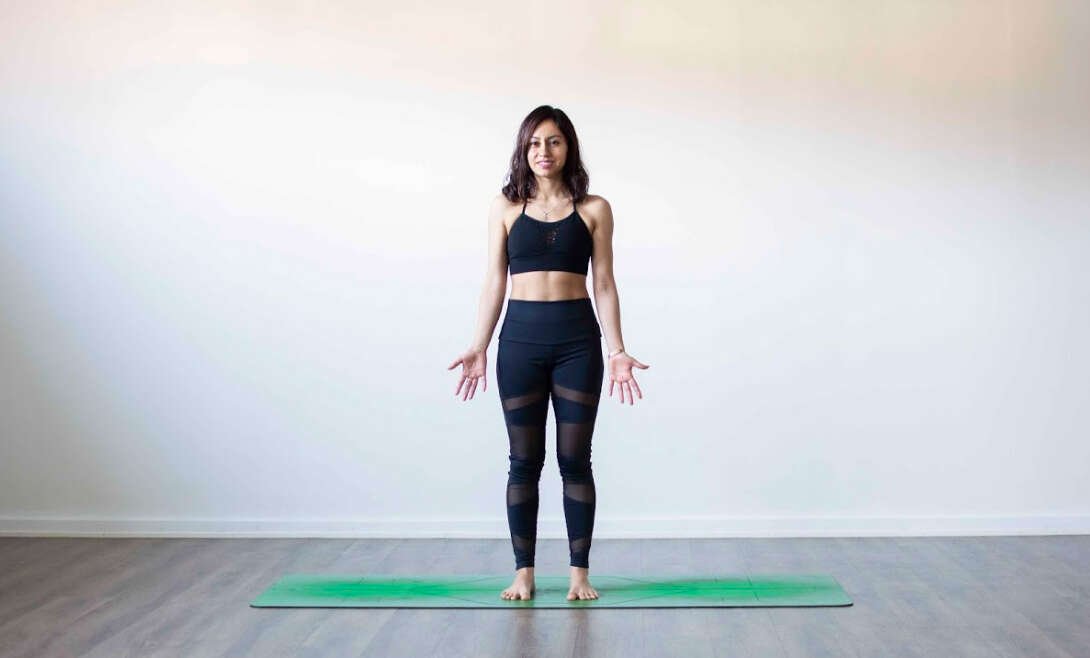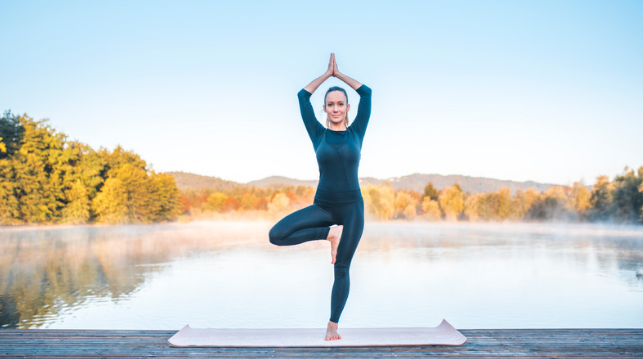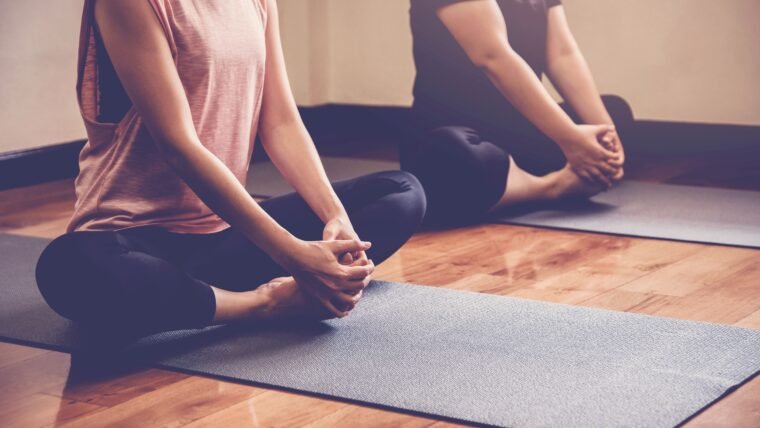We spend hours slouched over screens and stuck in chairs. Over time, this affects our posture, weakens our muscles, and leaves us feeling drained. That’s where yoga can help, especially foundational poses like Tadasana, also known as the Mountain Pose.
Tadasana may look simple, but don’t underestimate its power. It builds the base for many standing yoga postures. More importantly, it teaches us to stand with strength, awareness, and balance—things we often forget in our daily routine.
Let’s explore how Tadasana can become your go-to pose for better posture, improved breathing, and more mindful living.
What is Tadasana?
‘Tadasana’ comes from the Sanskrit words tada (mountain) and asana (pose). It’s also sometimes called the Palm Tree Pose. This standing pose helps you align your spine, engage your core, and feel grounded.
It may not involve dramatic stretching or complex movement, but it’s a full-body exercise in awareness. When practiced mindfully, Tadasana activates major muscle groups, improves posture, and even boosts mental clarity.
How to Do Tadasana (Step-by-Step)
Practicing Tadasana doesn’t require special equipment. You just need some space and a few quiet moments. Here’s how to do it:
- Stand straight with your big toes touching and heels slightly apart.
- Distribute your weight evenly across both feet. Don’t lean too far forward or backward.
- Engage your thigh muscles and lift your kneecaps slightly.
- Keep your pelvis neutral—not tilted forward or back.
- Activate your core muscles to support your spine.
- Lengthen your spine, lifting through the crown of your head.
- Let your arms rest by your sides with palms facing forward.
- Keep your shoulders relaxed and draw them slightly back.
- Soften your gaze or close your eyes. Breathe deeply.
Hold this position for 30 seconds to 1 minute. Focus on your breath. Feel your body align. Be present.
When to Practice Tadasana
The beauty of Tadasana is its flexibility. You can practice it anytime—morning, afternoon, or evening. It doesn’t require an empty stomach, making it a great midday break from work. However, if you’re adding it to a longer yoga session, make sure you haven’t eaten in the last 4–6 hours.
Key Benefits of Tadasana
Here’s how regular practice of Tadasana can help your mind and body:
1. Improves Posture
Tadasana is great for people who tend to hunch, slouch, or sit for long hours. It gently aligns your spine, stretches tight muscles, and helps relieve back and neck pain.
2. Strengthens Core and Legs
Even though you’re just standing, this pose engages your core, thighs, and calves. Over time, it builds strength and endurance, especially in the lower body.
3. Promotes Better Breathing
Tadasana opens up the chest and allows your lungs to expand fully. Deep breathing during the pose improves oxygen flow and reduces stress.
4. Enhances Body Awareness
When you stand still and focus on alignment, you start to notice muscle imbalances or tension. Tadasana teaches you how to self-correct, improving your posture even outside your yoga sessions.
5. Boosts Mental Clarity
Stillness in the body often leads to stillness in the mind. This pose helps calm your thoughts, reduce anxiety, and boost focus.
6. May Help with Health Conditions
Research suggests Tadasana can support conditions like:
- COPD: It opens the lungs and improves breathing.
- Parkinson’s Disease: It strengthens balance and posture.
- Ankylosing Spondylitis: It gently stretches the spine and eases stiffness.
Modifications and Tips
Tadasana is beginner-friendly, but here are a few tips to make it even more accessible:
- Balance issues? Practice the pose near a wall or hold a chair for support.
- Back pain or tight hips? Stand with feet hip-width apart instead of together.
- Pregnant? Keep feet slightly wider and don’t over-engage the core.
Don’t worry if you can’t get all the alignment cues right at once. Focus on one or two body parts at a time. As you improve, add more details.
Common Mistakes to Avoid
- Locking your knees—keep them soft and slightly bent.
- Shrugging your shoulders—keep them relaxed and down.
- Letting your belly sag—engage your core gently.
- Holding your breath—breathe naturally and deeply.
Remember, Tadasana isn’t just about standing still. It’s about being fully present in your body.
Safety Precautions
While Tadasana is safe for most people, avoid it or speak to a doctor first if you have:
- Low blood pressure
- Dizziness or vertigo
- Severe back or joint pain
- Recent surgery
Always listen to your body if something doesn’t feel right, back off or ask a certified yoga instructor for guidance.
Practice Tadasana with Yoga at Home
If you’re new to yoga or unsure where to begin, guidance can make a huge difference. At Yoga at Home, we offer expert-led sessions that fit your lifestyle. Whether you want to fix your posture, reduce stress, or start a regular practice, we’ll help you do it at your own pace, in your own space.
Tadasana is just the beginning. Mastering this pose lays the foundation for deeper, more advanced yoga. And the best part? You don’t have to do it alone.
Conclusion
Tadasana might seem simple, but its benefits go deep. From posture and breath to strength and awareness, this pose helps you reconnect with your body. It’s a great reminder that sometimes, standing still can be the most powerful move you make.
Start your journey with Tadasana today. And if you need a helping hand, Yoga at Home is just a click away.



